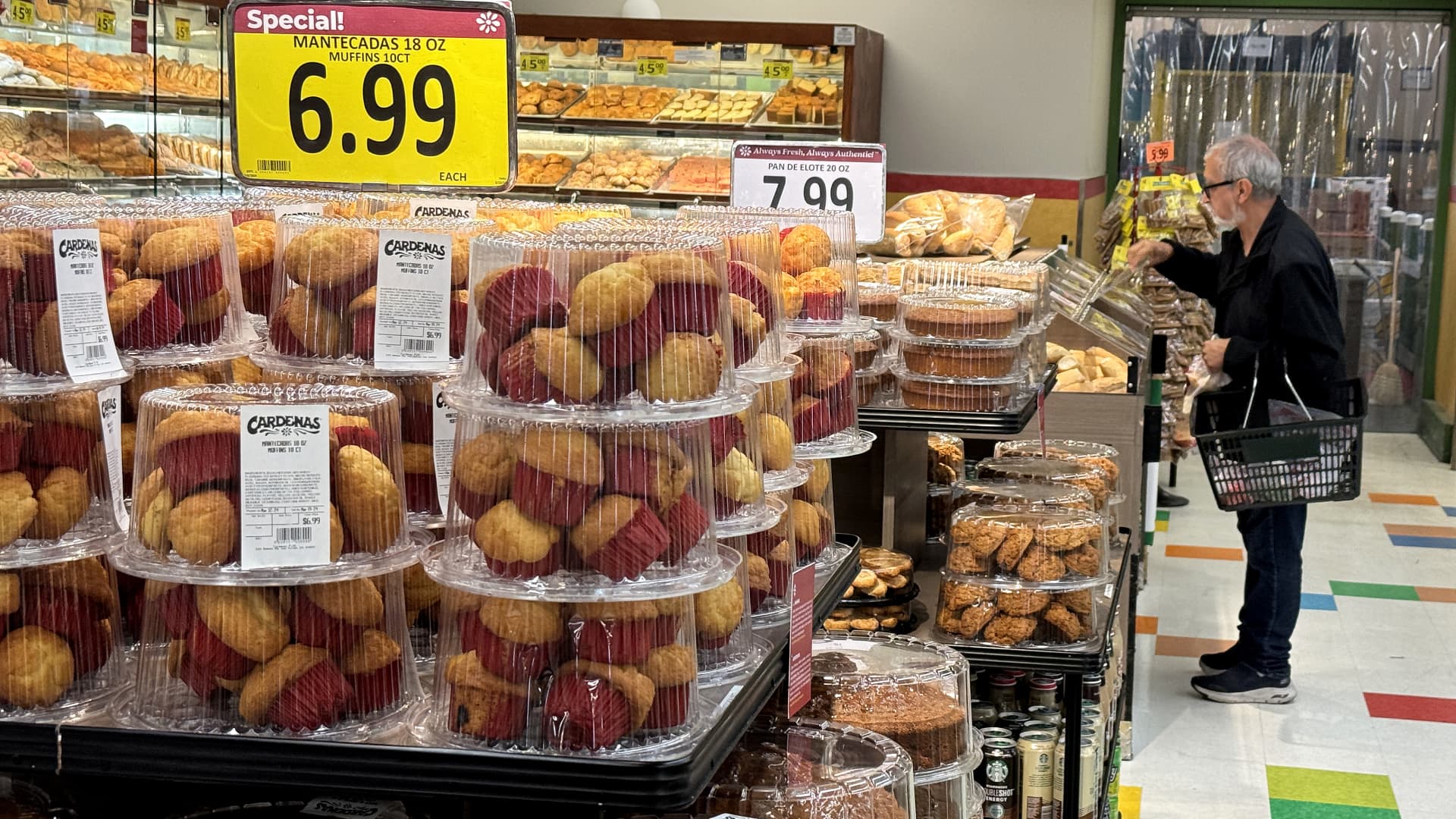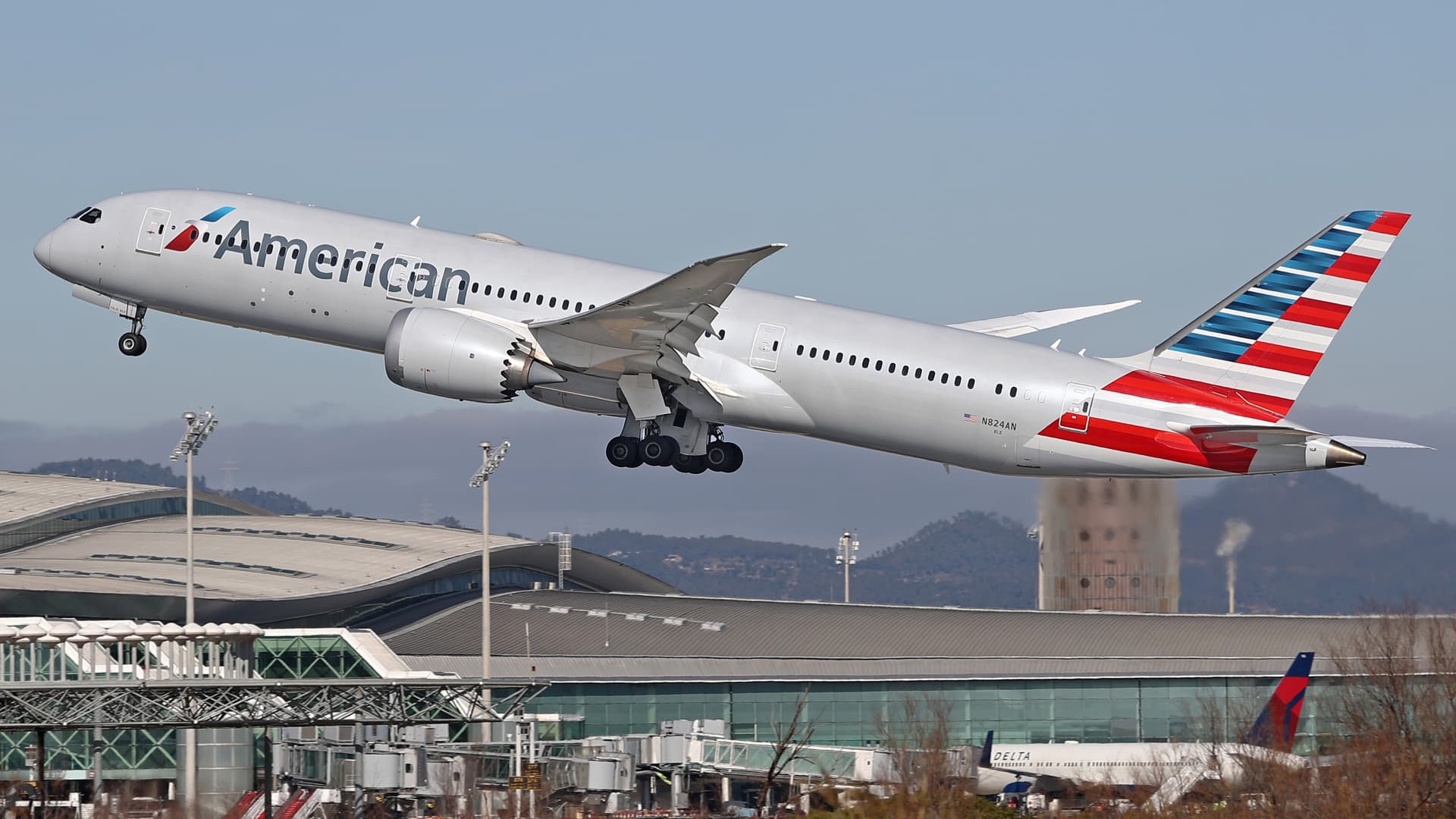Global logistics companies tell CNBC they have started the planning for a potential Trump win in November and the strategies that will be needed to mitigate any additional tariffs, with Mexico a key import gateway for any escalation in the trade war against China begun under Trump and continued during the Biden presidency.
The planning started after the former president said in February he was considering a plan to impose tariffs of 60% or higher on Chinese goods as well as a blanket 10% tariff on all U.S. imports in his potential second term.
In a CNBC "Squawk Box" appearance on Monday morning, Trump escalated his trade war rhetoric, saying "I'm a big believer in tariffs," and indicated that he's likely to implement more duties on foreign goods should he win election to a second term.
The Trump administration used delegated authorities under three trade laws to unilaterally levy tariffs without Congressional approval. The current range of the tariffs on a wide variety of U.S. imports today is between 10% and 25%.
Nikki Frank, CEO OF DHL Asia, said in an interview last week at the TPM conference in Long Beach, California, that diversification of the supply chain away from China will ramp up if more tariffs are levied.
"I think it will accelerate the current movement of de-risking and diversifying away from China into other countries," Frank said. "A 60% tariff will make it more attractive to move to other places," he added. The Trump administration tariffs kickstarted a shift in supply chain strategy which, according to Frank, became more well-developed by customers during Covid, when they contemplated moving factories and production out of China.
He expects any increase in tariffs during a second Trump presidency to lead to a greater shift in trade from China to Mexico to avoid the tariffs. That's already happening, with 15% of China's trade bound for the United States crossing the Mexican border as a result of Chinese companies setting up shop in Mexico or using Mexican ports. The additional containers of Chinese freight avoiding the tariffs is adding to the bottom lines of both trucks and rail companies, a boom for railroad Union Pacific which is the only Class I railroad that serves all six major gateways to Mexico. It also connects with the two largest railroads operating in Mexico: Ferromex and Canadian Pacific Kansas City.
"The potential for us is significant," said Beth Whited, Union Pacific president, in a recent interview about its Mexico business with CNBC on the sidelines of the TPM conference. "As you see people really rethinking their supply chain and saying, they'd rather have some of these things a little closer to home and investing in Mexico for growth. We are very well-positioned to do that. Mexico is a big part of our business, and we are thrilled at the opportunity to take advantage of nearshoring as the investment in Mexico continues."
Paul Brashier, vice president of drayage and intermodal at ITS Logistics, said it's seeing a huge shift to Mexico as U.S. companies see the Mexican ports as a gateway for the future.
"There are some really good ongoing discussions with some very forward-thinking clients of ours that are using the ocean to bypass the Trump tariffs so I think the future is going to be exporting from East and West into Mexico," said Brashier in an interview at TPM. "If you're looking, at a Trump presidency, you can't have both China and Mexico be your enemy. So I'll be interested to see what side folks land on in that in that administration. I feel like Mexico is going to be the future. I just think that the relationship between the US and China is something that is going to be difficult to repair."
Chinese-made cars and Mexico trade
One of the sectors where analysts are seeing an increase in Mexican exports is the auto industry. Chris Rogers, head of supply chain research for S&P Global, said at TPM that one of the big Chinese automakers is already considering setting up in Mexico.
"One of the challenges with tariffs is that we like to say logistics finds a way, trade finds a way. And, you know, tariffs are just another barrier. Whether it's like the Red Sea, the excess demand of the pandemic era ... tariffs fall into kind of the same bucket. So you end up with a situation where you apply tariffs in one place, trade moves."
Trump specifically said during his Monday CNBC interview that he would target the Chinese auto industry.
"If you charge tariffs to China, they're going to build ... their car plants here and they're going to employ our people," Trump said. "We don't want to get cars from China. We want to get cars made by China in the United States using our workers."
Biden administration officials have also warned of the risks of China flooding the U.S. car market.
Rogers said that on a global basis, other countries that could see more manufacturing expansion are Vietnam and Malaysia. "We've seen mention of a 10% tariff on everything from everywhere so that's potentially hugely inflationary," he said. "I think, this would lead countries to come to the U.S. and negotiate for some sort of preferential trade arrangement that might help, obviously, free trade area partners like South Korea and Mexico. But again, this could be another reason why Mexico may do better."
Rogers cautioned that it's hard to plan for potential trade war scenarios. "It's worth remembering that there was a tariff case brought against Vietnam during the Trump administration as well that may rear its head again," he said. "We do know that there is an asymmetric risk with regards to tariffs."
Jon Gold, vice president, supply chain & customs policy at the National Retail Federation, told CNBC Mexico has long been a factor in strategies among it members to diversify their supply chains that predates the trade war. "Tariffs sped that decision up a little bit and Covid sped it up even further," said Gold.
He said tariffs implementation and viability depends upon the product category. "Because there are some categories that you just don't have the capacity or the capabilities of China. That's something we continue to tell lawmakers and regulators," Gold said. "As much as you want people to get out of China, companies are trying to do their best."
John Taylor IV, director of logistics for Berlin Packaging, said if the packaging supplier learned anything from the tariffs it was diversifying its supply chain and making it clear to clients to have at least two sourcing options.
"I don't want to say we were solely sourcing from China but it escalated us to build a supply chain out into other markets like Europe so if it's 60% tariffs that do come into play have options and it's not just China, We can flex into Thailand, and Europe," Taylor said.
Critics of tariffs warn about the broad economic impacts. The Trump tariffs imposed under Section 301 under the Trade Act of 1974 still apply to Chinese goods and a Biden administration review that was supposed to be completed at the end of 2023 has been extended through May 31.
"We continue to wait on the Biden administration to provide the results of their four-year review, which is now going into year five-plus," Gold said. "Unfortunately, trade has a negative connotation right now, but people need to understand how important trade is to us. ... If we don't import, we can't export," he said. "These imports help support millions and millions and millions of jobs. So that's something we need to look at. We can't string everything in because we lose the opportunity overseas and lose the jobs out here."
"I think it would be an economic disaster if we had 60% tariffs on any country, let alone our huge trading partner China," warned Peter Boockvar, chief investment officer of Bleakley Financial Group. "The unfortunate thing is the president alone can institute these tariffs with no check from Congress."
Critics also warn of inflationary effects to be borne by consumers, however, during the Trump presidency and implementation of tariffs, inflation did not spike above the historical average.
S&P Global research shows that China's share of the imports of products covered by tariffs imposed by the Trump administration has dropped.
"They started at 18% market share in the U.S. and now they dropped to around 11 percent, and that's with a 30% tariff," Rogers said. "So a 60% tariff could lead to another round of transformation. Now the winners there, have partly been Mexico, but it's also been the ASEAN countries. So that's included primarily Vietnam, Malaysia, Indonesia, and others. So Mexico should benefit if there's a new round of tariffs, but it won't be the only country to benefit."












 English (US) ·
English (US) ·  Turkish (TR) ·
Turkish (TR) ·